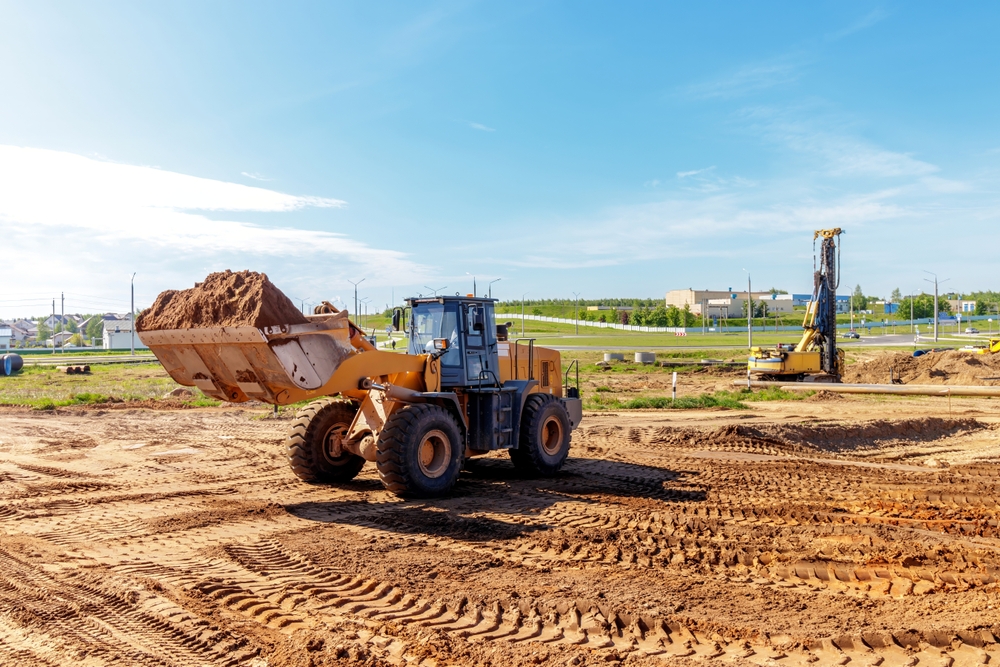Spring Thaw and Heavy Equipment: Preparing for Oregon’s Construction Season

As winter melts away and spring settles in, construction sites across Oregon start gearing up for the busy season ahead. The spring thaw brings with it challenges and opportunities for construction crews, particularly when it comes to preparing heavy equipment for the demanding months of work. The combination of thawing ground, rising temperatures, and the impending rainstorms requires contractors to be proactive in ensuring their machinery is in peak condition. This article will explore the significance of spring thaw heavy equipment preparation, what to expect from Oregon’s unique environment, and the best practices for making sure your equipment is ready to perform when needed most.
The Impact of Spring Thaw on Construction in Oregon
Spring thaw is an annual phenomenon where the frozen ground begins to soften and melt as temperatures rise. For construction projects in Oregon, this period marks a shift from winter conditions to the beginning of the peak construction season. However, the thaw can have both positive and negative effects on construction sites, particularly on heavy equipment.
In Oregon, where diverse terrain and weather patterns reign, the spring thaw often causes the soil to become saturated, turning construction sites into mud-laden challenges. This can significantly affect the performance of construction equipment, including excavators, bulldozers, and cranes. Heavy machinery can struggle to operate effectively on soft, unstable ground, and the risk of bogging down increases as the moisture content in the soil rises.
Additionally, heavy rainfalls typical of Oregon’s spring months can exacerbate the challenges posed by the thaw. This leads to construction delays, downtime, and the potential for equipment failure if machines are not adequately prepared for the season’s demands. It’s critical for contractors to take the right precautions early on to ensure that their equipment can handle the terrain and weather conditions without compromising safety or efficiency.
Importance of Heavy Equipment Preparation Before the Construction Season
Proper heavy equipment preparation is vital for minimizing disruptions caused by the spring thaw. As the temperatures shift and moisture content in the soil changes, it is essential for contractors to perform routine maintenance and address any potential mechanical issues in advance. Not only will this help avoid costly breakdowns, but it also ensures that the equipment can operate at its highest capacity during the crucial construction months ahead.
The spring thaw is unpredictable in its duration and intensity, making it difficult to determine exactly when the ground will soften enough to affect construction operations. However, proactive preparation allows contractors to stay ahead of potential delays. By ensuring equipment is functioning at its best before the thaw begins, crews can avoid wasting time on last-minute repairs or addressing issues that could have been prevented with proper preparation.
Before beginning any work, it’s critical to inspect each piece of machinery thoroughly. This includes checking for potential issues such as worn-out tires, hydraulic leaks, and engine problems. Special attention should be given to the undercarriages of bulldozers and excavators, as these components can accumulate mud and debris during wet conditions, leading to breakdowns if not cleaned properly. Additionally, the fuel and fluid levels should be checked, as machinery needs ample lubrication and the right fuel mixture to function optimally in varying weather conditions.
Best Practices for Heavy Equipment Maintenance During the Spring Thaw
As Oregon enters the spring thaw, contractors should consider implementing a range of best practices to ensure their heavy equipment stays operational and ready for use throughout the construction season. Routine inspections and targeted maintenance are the foundation of successful equipment preparedness.
One of the most crucial tasks is to ensure that tires and tracks are in excellent condition. Construction equipment, especially those used on soft or muddy terrain, depends on durable, well-maintained tires or tracks to prevent slipping and sinking. Before the spring thaw, contractors should inspect tire pressure and track tension to avoid any issues once the ground softens. For machinery with tracks, it’s also essential to check for any cracks or damage that could cause further complications during operation.
Regular lubrication is another essential aspect of preparing equipment for the spring thaw. Over time, machines endure significant wear and tear, and lubrication helps reduce friction, preventing premature wear of mechanical parts. Ensuring that all moving parts are properly lubricated helps reduce the risk of machinery breaking down in the middle of critical operations. Additionally, hydraulic systems should be checked to confirm there are no leaks and that the fluid levels are optimal, as hydraulic failure is a common cause of construction delays.
Another important consideration is the fuel and fluid system. Cold temperatures from the winter season may have affected the quality of fuel and oil in the equipment. Contractors should drain any old or contaminated fuel and replace it with fresh, high-quality fuel that is suited to the spring weather. This helps avoid performance issues and ensures the machines can work without interruption during the thaw and rainy seasons.
It’s also wise to keep a close eye on the electrical systems of the equipment. Spring rains, moisture, and humidity can affect electrical components, particularly if there are any exposed wires or connections. Inspecting the electrical system will prevent issues such as short circuits, which could halt machinery mid-project. By checking these systems before beginning operations, contractors can ensure the reliability of their equipment during the unpredictable spring thaw.
Addressing the Challenges of Muddy and Wet Construction Sites
Oregon’s spring thaw typically brings a combination of wet soil and persistent rainfall, which creates a challenging environment for construction workers and machinery. Muddy sites can lead to delays, particularly if heavy machinery becomes bogged down or stuck in the wet ground. However, contractors can take several steps to address these challenges and minimize downtime during the spring thaw.
One of the first measures to consider is site preparation. This involves reinforcing areas where machinery will operate with gravel or other base materials to prevent equipment from sinking into the mud. Contractors should also consider using mats or temporary roadways to provide a solid surface for heavy equipment to traverse. This not only prevents the machinery from becoming stuck but also helps to maintain the integrity of the construction site.
Additionally, proper planning for rain events is essential. Oregon is known for its unpredictable and frequent rainfall, which can cause construction sites to become saturated with water. Preparing for rainstorms by using drainage solutions, such as ditches or pumps, can help divert water away from the site and prevent flooding. This proactive approach will reduce the likelihood of water pooling in critical areas, which could otherwise cause delays and require extensive cleanup.
One of the most important considerations when operating heavy machinery in muddy conditions is the safety of workers. With wet and slippery surfaces, the risk of accidents increases. Contractors should reinforce safety protocols by ensuring that workers are properly trained in how to handle machinery in challenging conditions. Furthermore, it’s essential to monitor soil conditions closely and adjust operations as needed to avoid accidents related to ground instability.
Navigating Oregon’s Construction Season: Staying Ahead of Potential Delays
Oregon’s construction season can be unpredictable, with the spring thaw often signaling the beginning of a busy few months. However, with proper heavy equipment preparation and proactive planning, contractors can minimize the risk of delays caused by weather and ground conditions. By focusing on equipment maintenance, ensuring safety protocols are in place, and preparing the site for muddy or wet conditions, contractors can set their projects up for success.
As the ground thaws and construction ramps up, there’s no room for last-minute repairs or poor planning. Being prepared for the spring thaw not only ensures that heavy equipment will function smoothly but also helps teams stay ahead of the weather-related challenges that often disrupt construction timelines. Whether it’s anticipating the impact of spring rains or reinforcing machinery to handle the muddy terrain, each step taken during the early stages of the thaw will contribute to a more efficient and successful construction season in Oregon.
Conclusion
By implementing these strategies, contractors can confidently face the challenges that the spring thaw brings and navigate Oregon’s construction season with minimal disruption. The key to success lies in preparing ahead of time, maintaining equipment properly, and staying adaptable to changing conditions. With the right approach, Oregon’s construction projects can move forward smoothly, despite the unpredictable nature of spring weather.
